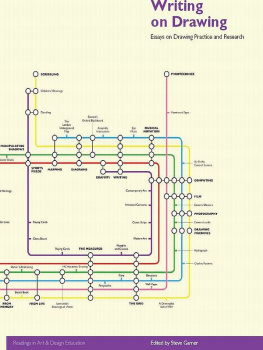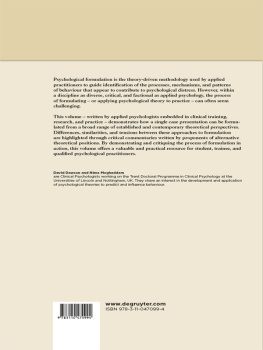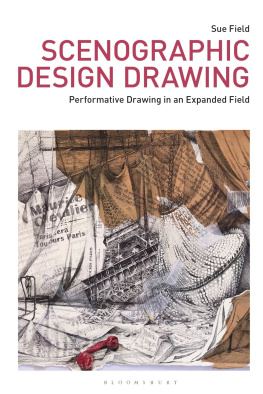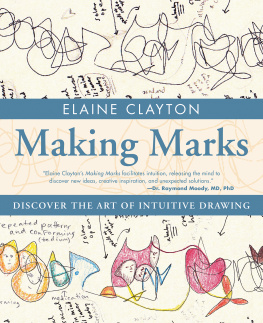Dawson Books. - Writing on drawing: essays on drawing practice and research
Here you can read online Dawson Books. - Writing on drawing: essays on drawing practice and research full text of the book (entire story) in english for free. Download pdf and epub, get meaning, cover and reviews about this ebook. City: Bristol, year: 2012;2008, publisher: National Book Network International;Intellect, genre: Romance novel. Description of the work, (preface) as well as reviews are available. Best literature library LitArk.com created for fans of good reading and offers a wide selection of genres:
Romance novel
Science fiction
Adventure
Detective
Science
History
Home and family
Prose
Art
Politics
Computer
Non-fiction
Religion
Business
Children
Humor
Choose a favorite category and find really read worthwhile books. Enjoy immersion in the world of imagination, feel the emotions of the characters or learn something new for yourself, make an fascinating discovery.
- Book:Writing on drawing: essays on drawing practice and research
- Author:
- Publisher:National Book Network International;Intellect
- Genre:
- Year:2012;2008
- City:Bristol
- Rating:4 / 5
- Favourites:Add to favourites
- Your mark:
- 80
- 1
- 2
- 3
- 4
- 5
Writing on drawing: essays on drawing practice and research: summary, description and annotation
We offer to read an annotation, description, summary or preface (depends on what the author of the book "Writing on drawing: essays on drawing practice and research" wrote himself). If you haven't found the necessary information about the book — write in the comments, we will try to find it.
Dawson Books.: author's other books
Who wrote Writing on drawing: essays on drawing practice and research? Find out the surname, the name of the author of the book and a list of all author's works by series.
Writing on drawing: essays on drawing practice and research — read online for free the complete book (whole text) full work
Below is the text of the book, divided by pages. System saving the place of the last page read, allows you to conveniently read the book "Writing on drawing: essays on drawing practice and research" online for free, without having to search again every time where you left off. Put a bookmark, and you can go to the page where you finished reading at any time.
Font size:
Interval:
Bookmark:
Writing on Drawing
Essays on Drawing Practice and Research
Essays on Drawing Practice and Research
Edited by Steve Garner
Series Editor: John Steers

First Published in the UK in 2008 by
Intellect Books, The Mill, Parnall Road, Fishponds, Bristol, BS163JG, UK
First published in the USA in 2008 by
Intellect Books, The University of Chicago Press, 1427 E.60th Street, Chicago,
IL60637, USA
Copyright 2008 NSEAD
All rights reserved. No part of this publication may be reproduced, stored in a retrieval system, or transmitted, in any form or by any means, electronic, mechanical, photocopying, recording, or otherwise, without written permission.
Series: Readings in Art and Design Education
Series Editor: John Steers
A catalogue record for this book is available from the British Library.
Cover Design: Gabriel Solomons
Cover Image: Plan de Dessin, 1 st Edition: Autumn 2006. A drawing of the Bigger Picture of
Drawing by Stephen Farthing. Graphics: Dennis Mariner.
Copy Editor: Holly Spradling
Indexer: Sue Vaughan
Type setting: Mac Style, Beverley, E. Yorkshire
ISSN 1747-6208
ISBN978-1-84150-200-7
EISBN 978-1-84150-254-0
Printed and bound by Gutenberg Press, Malta.
The chapter by Angela Anning contains material first published in Anning, A. & Ring, K. (2004) Making Sense of Childrens Drawings, Buckingham: Open University Press. The material is reproduced with the kind permission of the Open University Press.
Use of the Lucebert image Zwevende Boer (Floating farmer) in Deanna Petherbridges chapter by kind permission of Tony Swaanswijk-Lucebert and the Stedelijk Museum, Amsterdam.
Richard Talbot acknowledges the financial support of AHRC in this research and Newcastle University in paying DACS visual creators for the use of their artistic works.
Terry Rosenberg thanks John Rhys Newman for allowing access to his fictions and allowing a selection to reproduced.
Angela Eames acknowledges the time and enthusiasm of Michael Kidner in the research for her chapter.
Anna Ursyn thanks her students for the artwork used in her chapter.
Steve Garner
This book is the sixth in a planned series of anthologies dealing with a range of issues in art and design education. The previously published titles in the Intellect Readings in Art and Design Education series are:
Critical Studies In Art & Design Education
Art Education in a Postmodern World
Histories of Art and Design Education
The Problem of Assessment in Art & Design
Research in Art & Design Education: Issues and Exemplars
Further titles are in preparation.
This book departs from the format of earlier books in the series where the source of chapters was predominantly papers originally published in the [International] Journal of Art & Design Education. The chapters of this book are all previously unpublished.
The National Society for Education in Art and Design is the leading national authority in the United Kingdom, combining professional association and trade union functions, which represents every facet of art, craft and design in education. Its authority is partly based upon a century-long concern for the subject, established contacts within government and local authority departments, and a breadth of membership drawn from every sector of education from the primary school to universities.
More information about the Society and its range of publications is available at www.nsead.org or from NSEAD, The Gatehouse, Corsham Court, Corsham, Wiltshire SN13 0BZ, United Kingdom. (Tel: +44 (0)1249 714825)
John Steers
Series Editor
Anita Taylor
Drawing is a central and pivotal activity to the work of many artists and designers, a touchstone and tool of creative exploration that informs visual discovery and enables the envisagement and development of perceptions and ideas. Often categorised as a lesser activity than the main artefact or product, or otherwise remaining an intimate element of art practice, drawing has often been withheld from public viewing and the discourse in the field has often been marred by romantic visions of what drawing could and should be and how it might or might not be taught. Despite this conjecture, drawing remains a significant and important activity to many, is extensively encouraged if not taught in education and remains an important means of creative development, exploration and achievement. With a history as long and extensive as the history of our culture, the act of drawing remains a primordial and fundamental means to translate, document, record and analyse the worlds we inhabit.
There are distinct ways in which drawing functions as it distinguishes and aids us in understanding our complex world. Through signs and symbols, by mapping and labelling our experience, it can also enable us to discover through seeing either through our own experience of seeing, observing and recording or through the shared experience of looking at anothers drawn record of an experience. Drawing may have a transitory and temporal relationship with the world or it may provide a record of lasting permanence. It may be propositional, preparatory, visionary, imaginative, associative, factual, generative, transformative or performative. Drawing as an investigative, transformative and generative tool for the realisation and transference of ideas is at its best when the means of making are harnessed to the realisation of ideas and concepts, when it is fit for purpose and inventive within its means.
To this end, the viewer of the work benefits from a capacity to interpret and read the drawing, and to bring their own experience and understanding of language and perception to each drawing they see, be it a measured objective or realist drawing, an invented scene of the imagination, a proposition for the three-dimensional realisation of a design, a decoration, a symbol, or a sketch of emergent ideas. This literacy or fluency in visual language needs to be ensured and to be developed, nurtured, enhanced and challenged as an equivalently important means of communication to the predominance of verbal and written communication in our educational systems and cultures.
Uses of drawing vary enormously, ranging from limbs marked with dotted lines and arrows indicating what is proposed to happen in the absence of spoken confirmation under anaesthetic in operating theatres to road-markings which define for us the rules and regulations of driving, to street-finders and ordnance survey maps which indicate the route and nature of journeys, road signs, underground maps, lines which tell us how to open packets, lines which define a football pitch, marks or signs which tell us what way up to store something, signs which declare poison, pictures which tell us what is being transported, the graphic language of advertising, product design information, safety guides in aircraft, cartoons in the newspaper, product branding, coats of arms, logos in fact all those images that dont require verbal or written translation. These images and information-bearing signs transcend the barriers of different languages and enhance communication in an increasingly global world.
Images teased from raw materials, reveal the choices and decisions made when drawing, and consequently encapsulate and define the thinking process behind the act. The enduring history of adjustment and adaptation within drawings informs the reading of the final image; and through the act of drawing we are not only left a trace of the physical act but the trace of the thinking process, as images or marks are made manifest, and evidently expose decisions, indecisions and indiscretions of this thinking out loud. The touch or imprint of a mark reveals whether it was made at speed, slowly, angrily, with love, with force, tentatively, stuttering-ly, gently, or as a notation, by an individual, personally or through printed or animated reproduction. The materials used to make the marks, and the surface on which the marks are made also inform us, not just about the period and timescale in which a drawing was made but the intention at the outset and any modification of this intention as the drawing has progressed.
Next pageFont size:
Interval:
Bookmark:
Similar books «Writing on drawing: essays on drawing practice and research»
Look at similar books to Writing on drawing: essays on drawing practice and research. We have selected literature similar in name and meaning in the hope of providing readers with more options to find new, interesting, not yet read works.
Discussion, reviews of the book Writing on drawing: essays on drawing practice and research and just readers' own opinions. Leave your comments, write what you think about the work, its meaning or the main characters. Specify what exactly you liked and what you didn't like, and why you think so.







